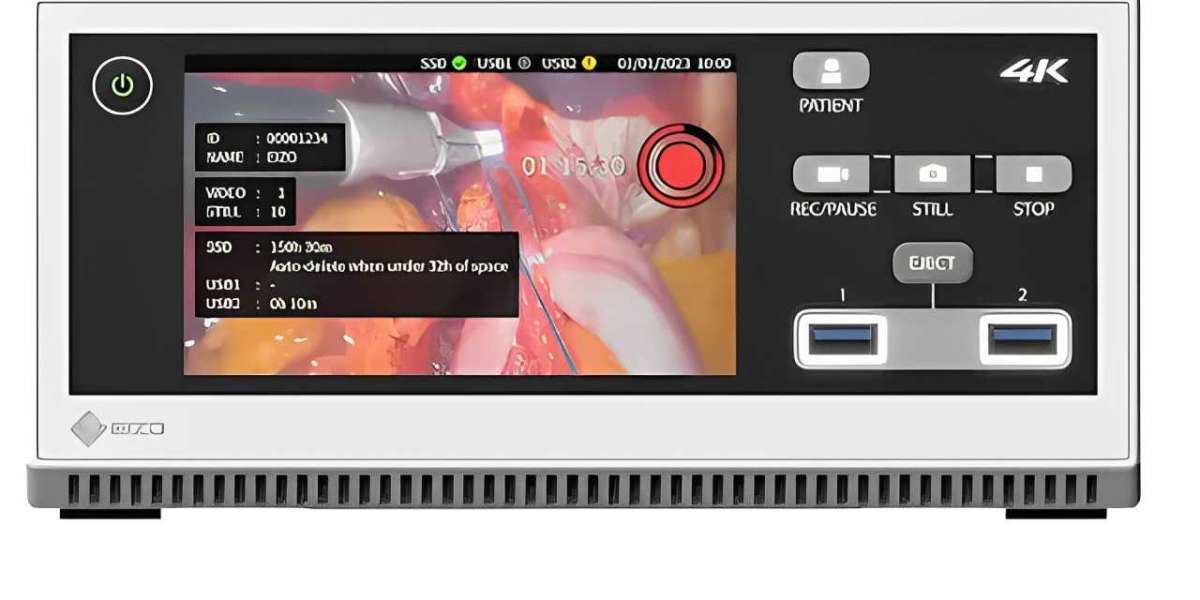Medical technology has come a long way. From patient care to diagnostics, advancements in equipment make a huge difference in healthcare outcomes. The HD medical imaging recorder is one of the most vital tools for medical professionals today. It's not just a fancy gadget; it's essential for better diagnostics, efficient treatment, and patient safety. Let’s break down why every medical facility should have one.
The Power of High-Definition
First, what sets an HD medical imaging recorder apart from other devices? It's all in the clarity. High-definition technology gives healthcare providers crisp, clear, and detailed images. When doctors and technicians examine something as intricate as a patient’s organs or tissues, every pixel matters. Blurry images could lead to misinterpretations or missed details, which might have serious consequences.
Accuracy in Diagnostics
High-definition imaging isn't just a perk; it’s a game-changer in medical diagnostics. With an HD medical imaging recorder, doctors can detect anomalies that might go unnoticed on standard equipment. Early detection is often the key to treating conditions before they escalate. For example:
- Cancer detection: Early-stage tumors may be tiny and hard to spot. HD imaging makes it easier to identify even the smallest irregularities.
- Cardiac issues: Detailed imaging helps pinpoint blockages or other issues in the heart more accurately.
- Orthopedic concerns: HD imaging allows for better assessment, whether it’s a fracture or a soft tissue injury.
Better Patient Outcomes
Better images lead to better diagnoses, and better diagnoses lead to more effective treatment plans. When medical professionals can clearly see what’s happening inside a patient’s body, they can tailor treatments to fit their needs. This level of precision ultimately contributes to better outcomes.
Imagine a surgeon performing a complex procedure—clear imaging could mean the difference between success and complications. No one wants guesswork in the operating room, and an HD medical imaging recorder ensures that doctors are armed with the best visual data possible.
The Convenience Factor
Let’s be honest, time is money—especially in medicine. The more efficient the technology, the quicker doctors can do their jobs. HD medical imaging recorders provide superior images and often allow for faster processing times.
Speeding Up Workflow
Consider this scenario: a patient needs immediate care, and the medical staff must quickly determine the problem. With an HD medical imaging recorder, technicians can capture high-quality images in seconds. There's no waiting around for low-quality images to load or needing to retake scans because the first batch was unclear.
This speed doesn't just help the patient; it also streamlines the facility’s workflow. Less time spent on imaging means more time for patient care. In a busy hospital or clinic, that’s a game-changer.
Simple Sharing and Storage
Another significant advantage of HD medical imaging recorders is the ease of sharing and storing these high-quality images. Doctors, specialists, and patients can easily access the records as needed. The process is smooth and straightforward, whether sharing with other medical professionals for a second opinion or archiving the images for future reference.
No more shuffling through piles of paperwork or waiting for CDs to be burned. Digital storage solutions are integrated with most HD imaging systems, making record-keeping far more efficient.
Cost-Effective in the Long Run
Investing in an HD medical imaging recorder might seem like a big expense upfront. Still, it's one of those purchases that pays for itself over time. Here’s how:
- Fewer repeat tests: Clearer images mean fewer chances of having to redo scans, which saves on resources.
- More accurate diagnosis: Spotting issues early reduces the need for costly, extensive treatments down the road.
- Enhanced patient satisfaction: When patients see their care providers using advanced technology, it boosts their confidence in their care. Happy patients often lead to better facility ratings and referrals.
Maintenance and Longevity
Another point is that HD medical imaging recorders are built to last. They require minimal maintenance, and when they need a tune-up, many are equipped with self-diagnosing features that make the process quick and easy. This means less downtime for your facility and more reliable service in the long run.
Meeting Modern Standards
In today's medical world, staying current with technology isn't optional. It's a necessity. As healthcare standards continue to rise, so do expectations from patients and regulatory bodies. Using an HD medical imaging recorder keeps your facility on the cutting edge of technology, ensuring that you're meeting the highest standards of care.
Not to mention, more insurance companies and regulatory agencies are requiring high-quality imaging for approvals and reimbursements. In many cases, having the latest equipment ensures smoother interactions with these entities, reducing delays and denials.
Conclusion
Every medical facility—from the smallest clinic to the largest hospital—benefits from an HD medical imaging recorder. It enhances diagnostic accuracy, speeds up workflow, improves patient outcomes, and ensures your facility stays ahead of the curve. Why compromise on something so critical? With the clarity, convenience, and cost savings that HD medical imaging recorders provide, it's clear why this technology should be standard in every healthcare facility. Investing in the best for your patients is always worth it.













